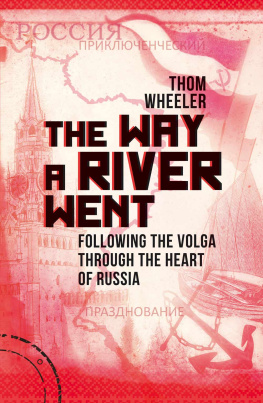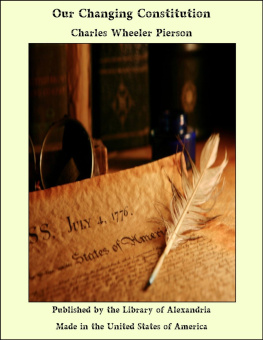Patrick Wheeler - Ribbons Among the Rajahs
Here you can read online Patrick Wheeler - Ribbons Among the Rajahs full text of the book (entire story) in english for free. Download pdf and epub, get meaning, cover and reviews about this ebook. year: 2017, publisher: Pen & Sword Books, genre: Non-fiction. Description of the work, (preface) as well as reviews are available. Best literature library LitArk.com created for fans of good reading and offers a wide selection of genres:
Romance novel
Science fiction
Adventure
Detective
Science
History
Home and family
Prose
Art
Politics
Computer
Non-fiction
Religion
Business
Children
Humor
Choose a favorite category and find really read worthwhile books. Enjoy immersion in the world of imagination, feel the emotions of the characters or learn something new for yourself, make an fascinating discovery.
- Book:Ribbons Among the Rajahs
- Author:
- Publisher:Pen & Sword Books
- Genre:
- Year:2017
- Rating:5 / 5
- Favourites:Add to favourites
- Your mark:
- 100
- 1
- 2
- 3
- 4
- 5
Ribbons Among the Rajahs: summary, description and annotation
We offer to read an annotation, description, summary or preface (depends on what the author of the book "Ribbons Among the Rajahs" wrote himself). If you haven't found the necessary information about the book — write in the comments, we will try to find it.
Ribbons Among the Rajahs — read online for free the complete book (whole text) full work
Below is the text of the book, divided by pages. System saving the place of the last page read, allows you to conveniently read the book "Ribbons Among the Rajahs" online for free, without having to search again every time where you left off. Put a bookmark, and you can go to the page where you finished reading at any time.
Font size:
Interval:
Bookmark:

Ribbons Among the Rajahs
A History of British Women in India Before the Raj
Patrick Wheeler

First published in Great Britain in 2017 by
PEN AND SWORD HISTORY
an imprint of
Pen and Sword Books Ltd
47 Church Street
Barnsley
South Yorkshire S70 2AS
Copyright Patrick Wheeler, 2017
ISBN 978 1 47389 327 6
eISBN 978 1 47389 329 0
Mobi ISBN 978 1 47389 328 3
The right of Patrick Wheeler to be identified as the author of this work has been asserted by him in accordance with the Copyright, Designs and Patents Act 1988.
A CIP record for this book is available from the British Library All rights reserved. No part of this book may be reproduced or transmitted in any form or by any means, electronic or mechanical including photocopying, recording or by any information storage and retrieval system, without permission from the Publisher in writing.
Pen & Sword Books Ltd incorporates the imprints of Pen & Sword Archaeology, Atlas, Aviation, Battleground, Discovery, Family History, History, Maritime, Military, Naval, Politics, Railways, Select, Social History, Transport, True Crime, Claymore Press, Frontline Books, Leo Cooper, Praetorian Press, Remember When, Seaforth Publishing and Wharncliffe.
For a complete list of Pen and Sword titles please contact
Pen and Sword Books Limited
47 Church Street, Barnsley, South Yorkshire, S70 2AS, England
E-mail:
Website: www.pen-and-sword.co.uk
Few of us can have given much thought to the presence of European women in India 200 years ago but, unquestionably, they should be remembered. For all the varied and complex reasons that took them there so many years ago, under such daunting circumstances, and largely under the social pressures of those days, and not least because so many of them lie there still. They were mostly ordinary, everyday individuals, in surprisingly large numbers, who had shared the experiences of the men of that time, but who could not themselves have any great impact on the interaction of the British with India because of their repressed social status.
The seeds of this book were sown while I was dabbling with some family history research a few years ago. Part of the reason for this was to assemble something of interest for the next generation, completely overlooking the possibility that they might prefer to do it for themselves or, more likely, that they might not be remotely interested. In the course of such probing, I spent some time looking at the life and career of a respectable and quite successful family forbear, who was a senior judge in Madras in the early 1800s. My interest was inevitably enhanced by my fascination in that country, its people and especially its history. I found that all sorts of historical data and correspondence existed for our judge, and much was known about his life and work, but, to my astonishment, absolutely nothing was known about his wife; not her date of birth, nor of her death, nor even whether she had accompanied her husband to India and nearby territories. Somehow she was just a blank; airbrushed out of history. From this point on it was a simple step towards recognising that this was true of legions of women who went to India in the eighteenth and early nineteenth centuries. They are a forgotten community. Not being contributors to the great events of the day, they have been swept into a corner, and long since lost to history. In the main, these women went out of duty, following husbands or brothers, or because they were shipped out to the care of family or friends, being difficult to marry off in Georgian England. Occasionally they were despatched to that country because they were the illegitimate offspring of the wealthy. In this, they were akin to the luckless second sons of the great and the good who did not inherit, and were perhaps not fitted for a life wedded to the Church, or the army, and who were therefore packed off to India to make their fortune; or so it was hoped. Other women went out of desperation. Perhaps their fathers had died, too indigent to leave enough to support several daughters, as well as a widow, and yet a prospective husband could not be found. India was a clear option, where there were numerous lovelorn bachelors all set to make a fortune, or so these girls had been told, and therefore anticipated. Furthermore there was, from their point of view, a convenient shortage of potential brides and thus of competition; Caucasian at least. Lastly, some women clearly went from a sense of adventure and excitement. As like as not they had a family member already there, and this was a ready excuse to explore and fulfil some romantic fantasies. In Indian British society it was possible to do what would have been unthinkable in Britain, and that was to cross social boundaries, so deeply engraved on the backbone of life back home, and hopefully to elevate ones status in society. Nevertheless, thinking of going to India was one thing, getting there was quite another. The considerable expense of the journey had to be paid in advance, and the journey itself was lengthy, hazardous, tedious and unhealthy. There had to be, they thought, something secure and worthwhile at the end, after taking such an arduous gamble.
I have used frequent quotations from the available texts because the original language gives a stronger flavour of the period; an immediacy and authenticity, which, in a small way, brings those times to life. I have also strayed from convention by referring to them as Indian British. This is slightly more in line with their own custom, which was to refer to themselves as Indians, hardly appropriate today. Many current texts use the terminology Anglo-Indian which is confusing, in that this is a term very commonly used for those of mixed Indian and British blood, especially in contemporary India. It also rather overlooks the well known fact that a very high percentage of the Indian British were in fact Scottish. I have also inserted occasional words in brackets in the quoted texts to better convey the meaning of the writer, where this may be unclear. Otherwise I have not interfered with the often imperfect punctuation, and have retained the original wording. If there is any deviation, it is more than likely due to the difficulty of reading some of these faded handwritten letters.
Finally, I should like to acknowledge the assistance and guidance of various individuals and groups, including Rosie Llewellyn-Jones; Penny Brooks; the staff of the Asia, Pacific and Africa Collections at the British Library; Barbara Roe; Richard Virr, and the staff at Pen and Sword Books Ltd.
This book is chiefly a social history. Any study of the lives of women during the Georgian and Regency period, and before the Victorian era with its Imperial power, could never have any flavour of politics or economics. They were simply barred from any consideration of that sort, unless they had unusual influence over their husbands. Therefore it can only be an account of everyday living; of the duties, responsibilities and amusements of women 200 years ago. This is not as long ago as it sounds. For older individuals, who possibly remember their grandmothers quite well, one is referring only to their own grandmothers, albeit in their childhood. As time passes, the first historical reality to become forgotten is an individuals everyday manner of living and coping. Politics and great national or military events live on, and rightly so, because it is they which dictate the subsequent course of a nations life. Nevertheless, the day to day minutiae of the lives of these women had relevance, partly because of the effect they may have had on how the decision-makers (the men) conducted their lives, but also being of historical interest in their own right.
Next pageFont size:
Interval:
Bookmark:
Similar books «Ribbons Among the Rajahs»
Look at similar books to Ribbons Among the Rajahs. We have selected literature similar in name and meaning in the hope of providing readers with more options to find new, interesting, not yet read works.
Discussion, reviews of the book Ribbons Among the Rajahs and just readers' own opinions. Leave your comments, write what you think about the work, its meaning or the main characters. Specify what exactly you liked and what you didn't like, and why you think so.













